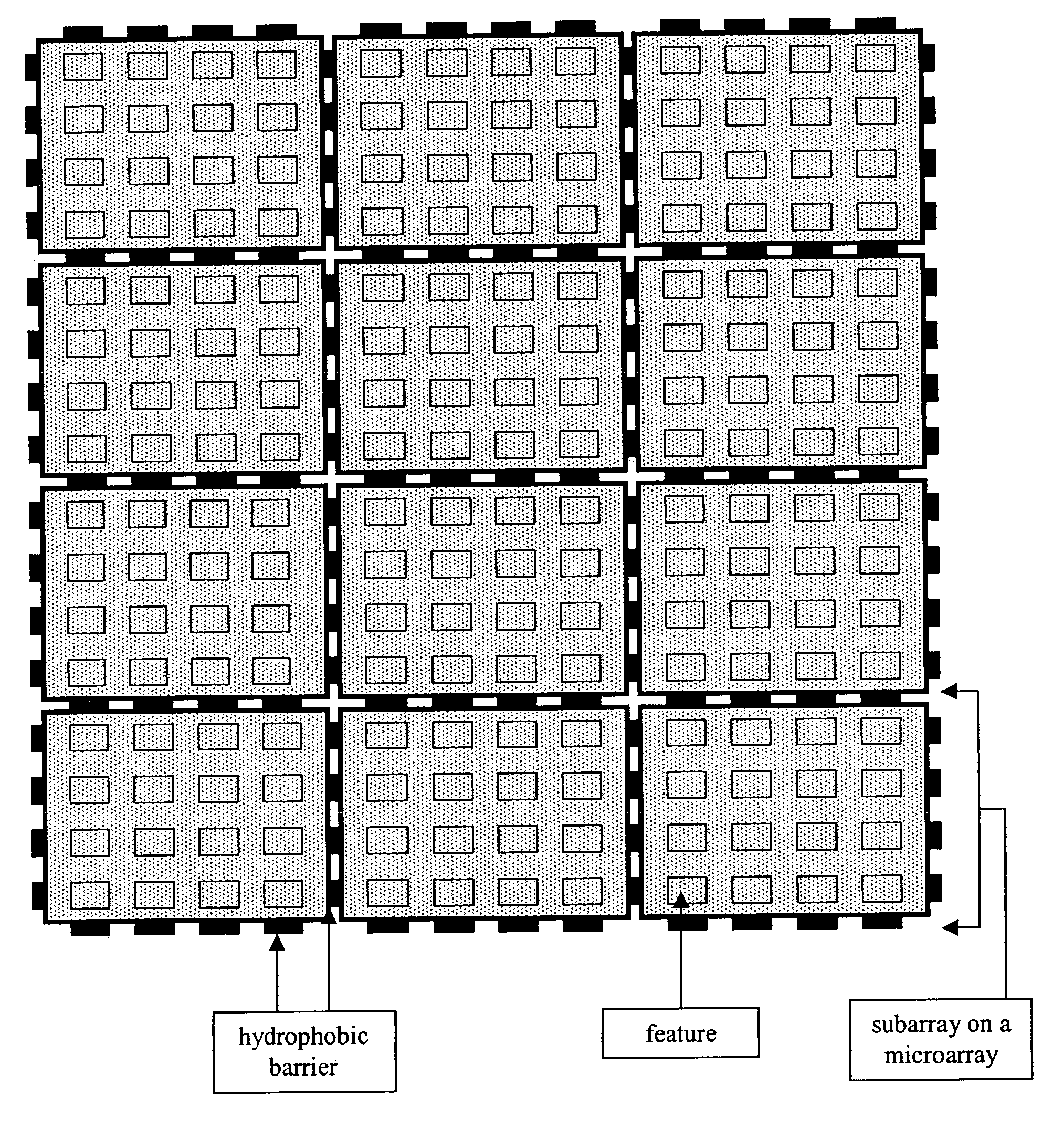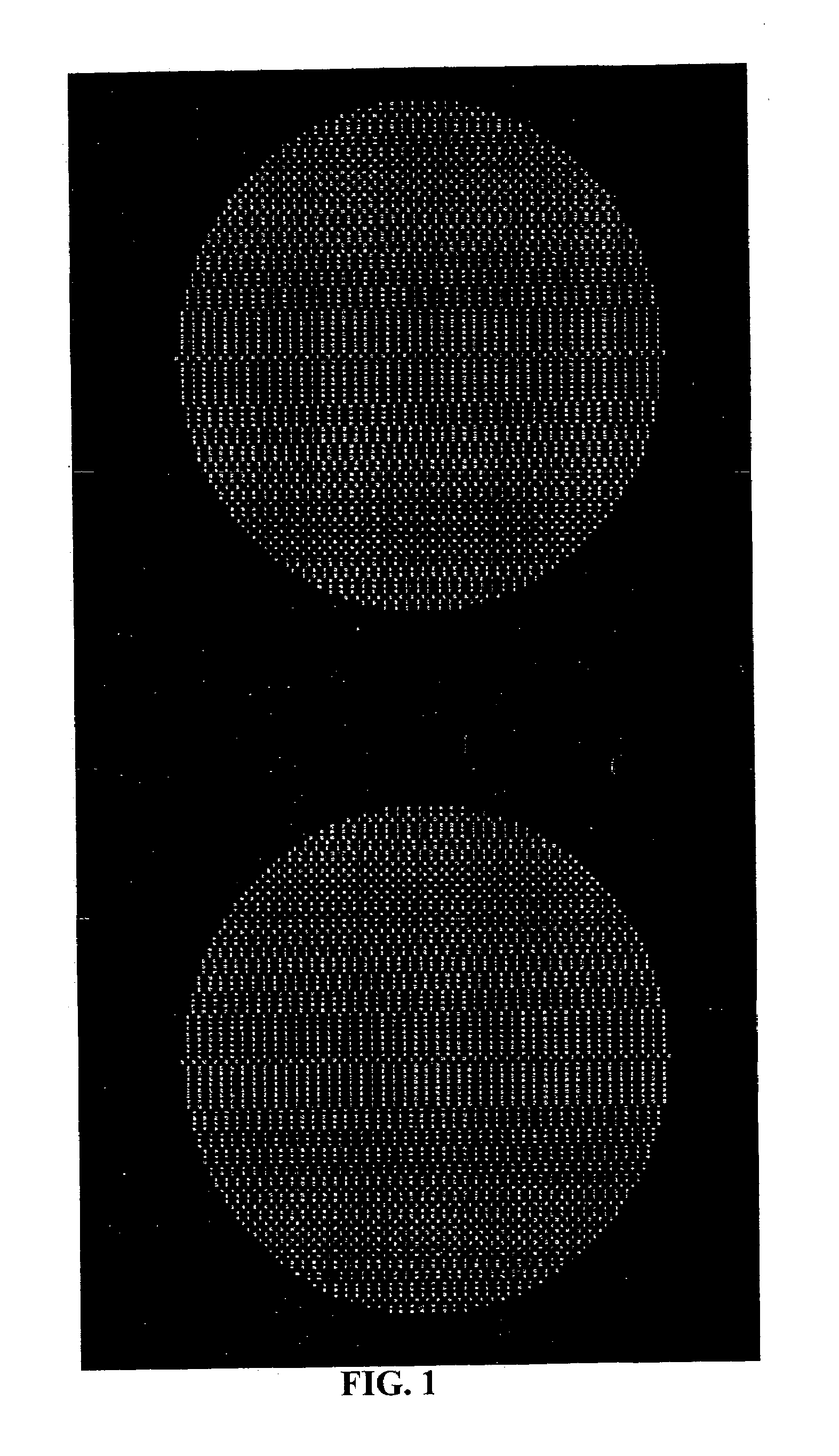Microarray with hydrophobic barriers
a technology of hydrophobic barriers and microarrays, applied in the field of microarrays with hydrophobic barriers, can solve the problems of most applications not tapping into the full capacity of microarray technology, and not an ideal approach
- Summary
- Abstract
- Description
- Claims
- Application Information
AI Technical Summary
Benefits of technology
Problems solved by technology
Method used
Image
Examples
example
Building Hydrophobic Barriers Surrounding Subarrays
[0022]The photolabile phosphoramidite protecting group, NPPOC-T was coupled to the entire array surface under standard coupling conditions well known in the art of oligonucleotide and in situ array synthesis. In order to carry out the inventive method, care is taken to ensure that there is appropriate spacing, suitably at least between 4 to 7 mirror wide lanes (60-120 μm), and optionally longer spacing is suitable. The probe subarrays are synthesized by the MAS™ instrument according to the method described herein. The area to be a barrier is deprotected using the digital mirror devices of the MAS™ microarray synthesis instrument. The trityl phosphoramidite (protected phosphoramidite) is then coupled to the barrier areas also using methods well known to one skilled in the art. A deblocking step is not performed. The entire array is deprotected under conditions that do not remove the trityl moiety. The deprotection conditions are used...
PUM
| Property | Measurement | Unit |
|---|---|---|
| Hydrophobicity | aaaaa | aaaaa |
Abstract
Description
Claims
Application Information
 Login to View More
Login to View More - R&D
- Intellectual Property
- Life Sciences
- Materials
- Tech Scout
- Unparalleled Data Quality
- Higher Quality Content
- 60% Fewer Hallucinations
Browse by: Latest US Patents, China's latest patents, Technical Efficacy Thesaurus, Application Domain, Technology Topic, Popular Technical Reports.
© 2025 PatSnap. All rights reserved.Legal|Privacy policy|Modern Slavery Act Transparency Statement|Sitemap|About US| Contact US: help@patsnap.com



